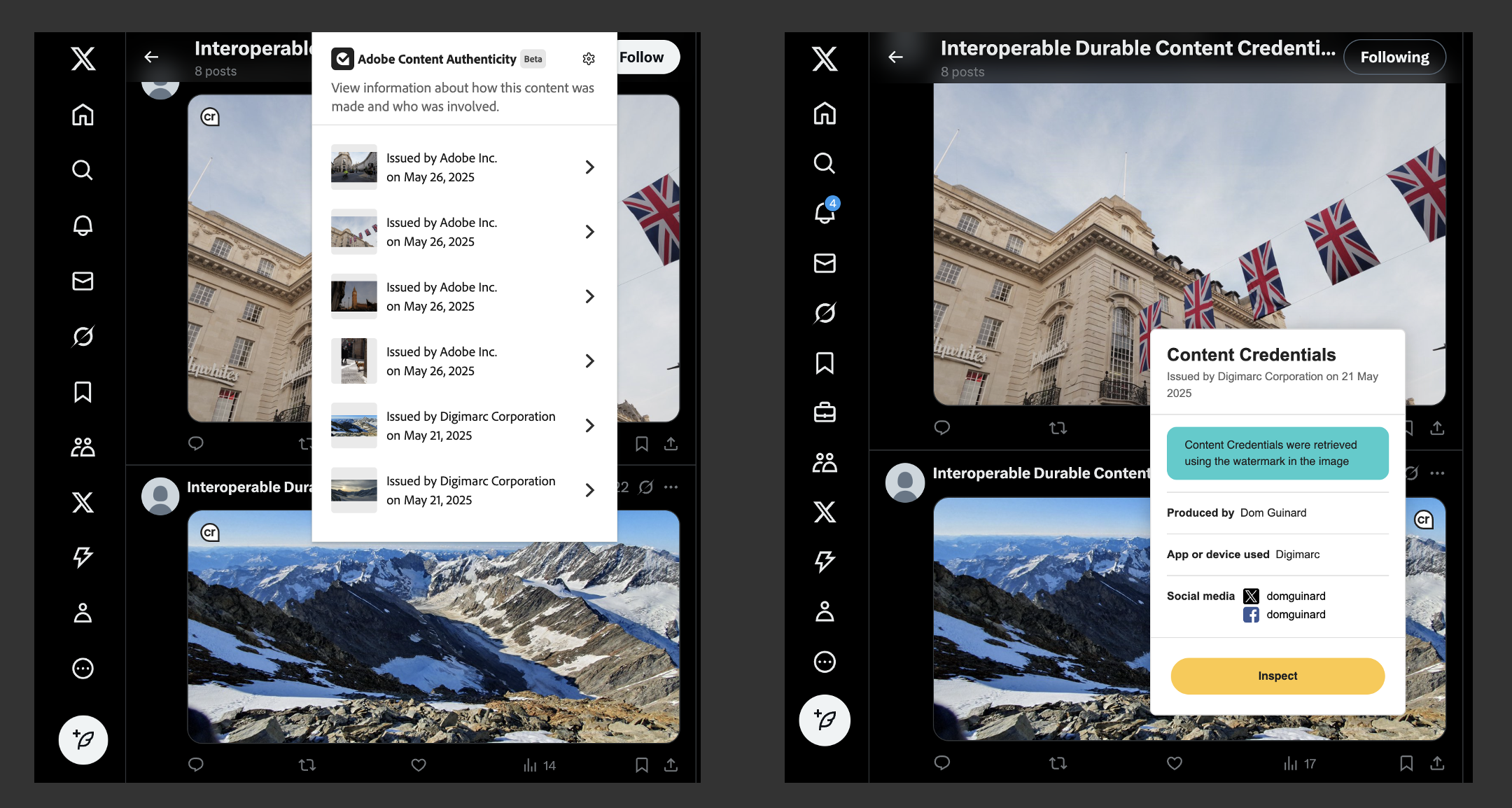Digital watermarking for interoperable and durable Content Credentials
Content Credentials enable creators to assert the authenticity of their work and gain proper attribution. Like a digital nutrition label, they tell viewers how a piece of content was created, enabling more informed trust decisions to be made. They can even empower creators to express opt-in or opt-out preferences for AI training and usage.
Although major platforms like LinkedIn and TikTok have adopted Content Credentials natively for their user experiences, it remains common for metadata carrying the credentials to be stripped away as images circulate online. This is why Content Credentials are often combined with digital watermarking to improve their durability: no matter where an image goes online, its provenance information remains discoverable and verifiable through a simple lookup in a browser extension or app.
Adobe Content Authenticity, a free app recently launched in public beta, enables creators and individuals to attach durable Content Credentials to their assets, ensuring they remain securely attached wherever the content travels online. Similarly, Digimarc’s Validate platform helps businesses and organizations protect and validate their assets. Each of these examples relies on a different watermarking technology, yet both serve the same goal: durable and verifiable provenance.
Various digital watermarking technologies will enable different use cases and will need to interoperate. In a first of its kind collaboration, Adobe and Digimarc have demonstrated the first interoperable durable Content Credentials - built on the Content Provenance and Authenticity (C2PA) global-industry standard. Recent enhancements to C2PA specification for Content Credentials define how independent providers can interoperate to look up credentials, and the joint demonstration shows it in action: a single browser extension can detect and verify both kinds of watermark, fetch the corresponding credential record, and display the full provenance of the image so that users can make more informed trust decisions about the content.
The interoperability leverages the open source watermark TrustMark to signal which company’s watermark is present, in order to properly decode and retrieve the durable Content Credentials. Below is a demonstration of this interoperable technology. Catch it at the Content Authenticity Summit at Cornell Tech!

How can different watermarking technologies interoperate to create durable Content Credentials?
- A creator applies invisible digital watermarking to their work whilst applying Content Credentials to protect it.
- One of the watermarks contains a signal that identifies the image, enabling its Content Credentials to be discoverable up if they are removed by content platforms.
- Another watermark contains a signal that identifies (or ‘signposts’) the type of watermarking technology used in the above.
- When a user views the watermarked image in their browser experience, the signposting watermark is discovered using open source, non-proprietary code.
- The browser then understands which kind of watermark is co-present, and loads the appropriate proprietary or open source app to view the image and associated Content Credentials.
- As with regular durable Content Credentials, that identity is used to recover provenance information for the image from the relevant technology company.
This process has been tested with Digimarc’s open source Chrome extension and Adobe’s Content Authenticity browser extension. By proving that multiple watermarking services can coexist under one discovery and verification pipeline, the Adobe and Digimarc collaboration paves the way for other providers to plug into the same ecosystem - fulfilling the vision of interoperability and durability at the heart of the Content Credentials standard.